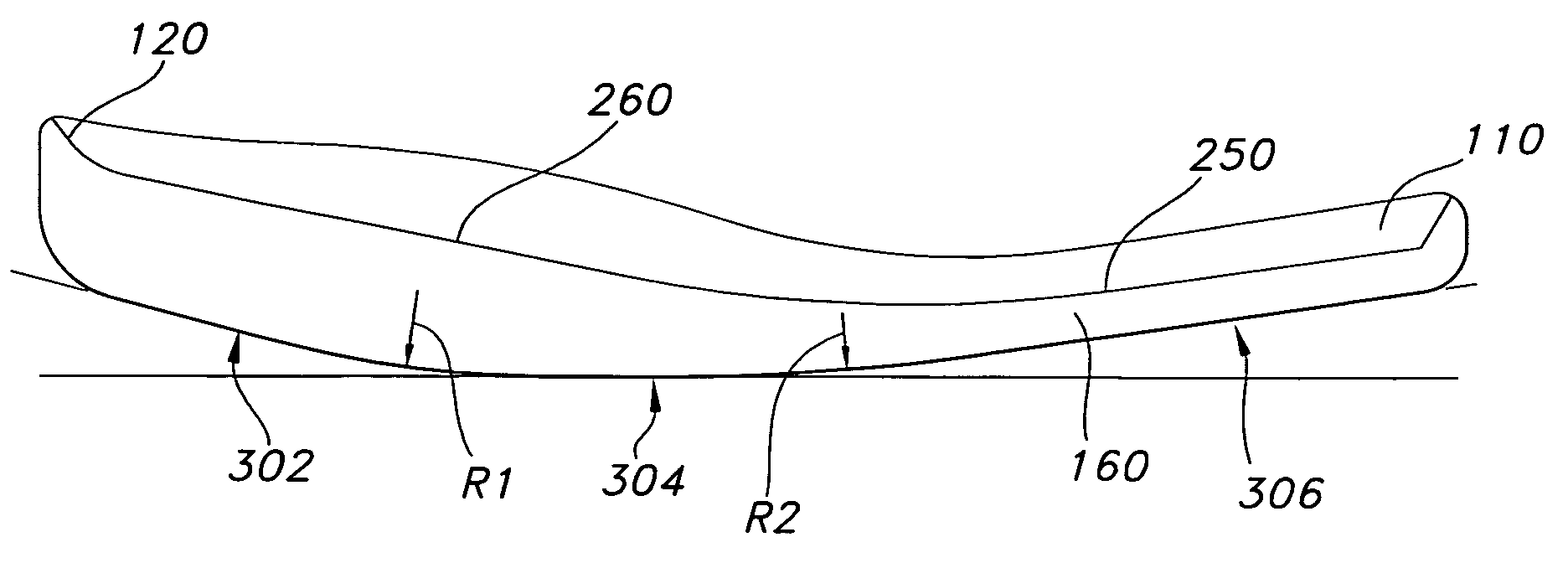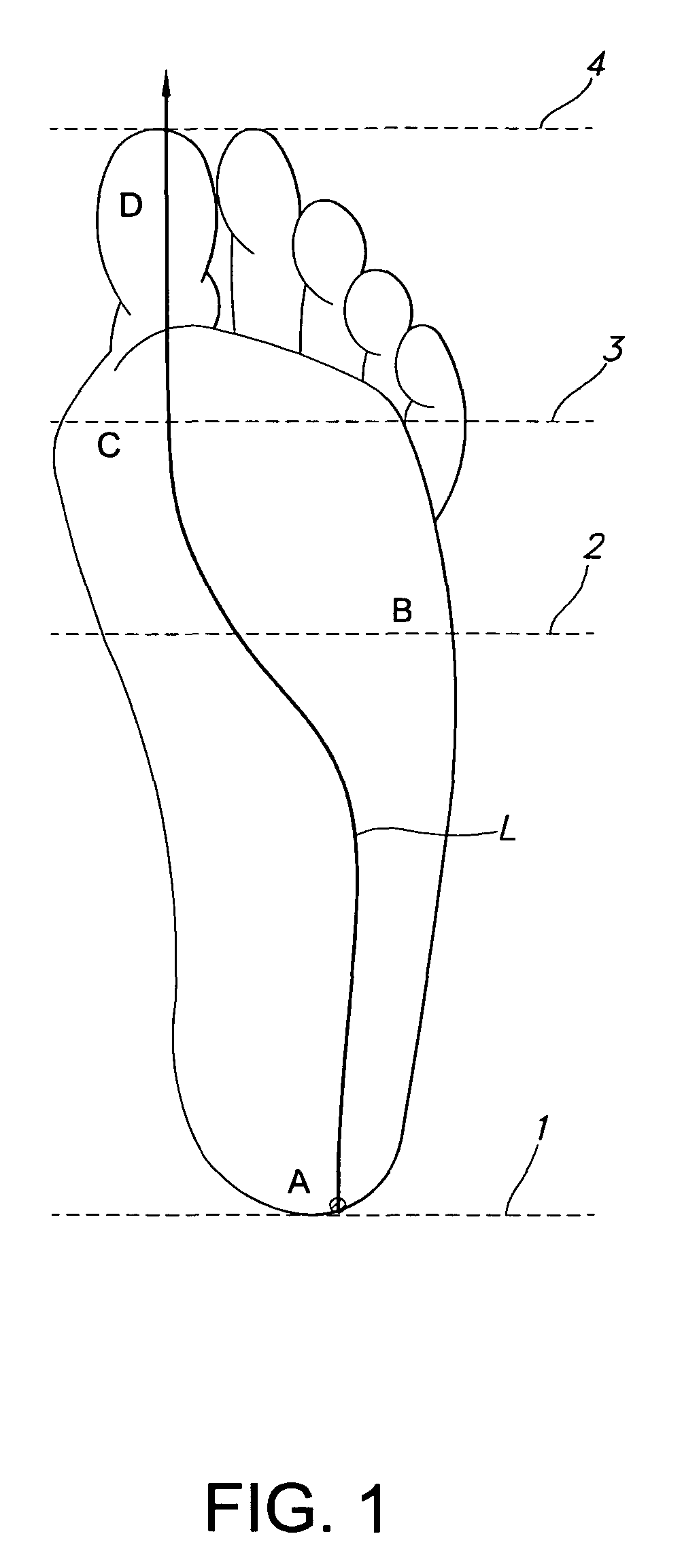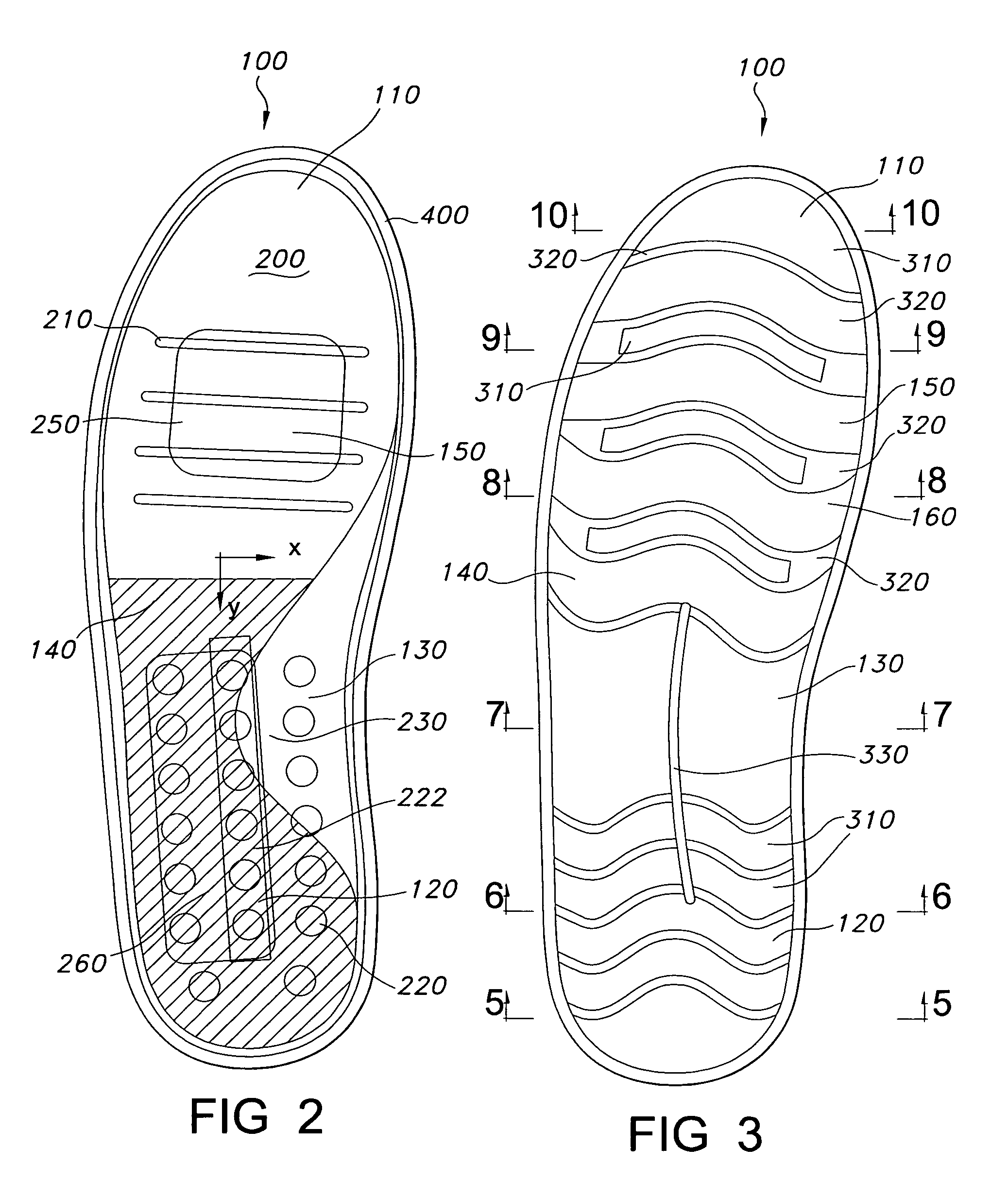Shoe sole
a technology of soles and shoes, applied in the field of shoes, can solve the problems of chronic tension, inflammation of various foot joints, and affecting the natural design of the soles of traditional shoes, and achieve the effect of reducing the number of shoes
- Summary
- Abstract
- Description
- Claims
- Application Information
AI Technical Summary
Benefits of technology
Problems solved by technology
Method used
Image
Examples
Embodiment Construction
[0028]The present invention will now be described more fully in detail with reference to the accompanying drawings, in which the preferred embodiment of the invention is shown. This invention should not, however, be construed as limited to the embodiment set forth herein; rather, the drawings are provided so that this disclosure will be complete and will fully convey the scope of the invention to those skilled in the art.
[0029]FIGS. 11 and 1 illustrate the natural motion of the foot through a complete walking step, from 11A through 11D. The upper portion of FIG. 11 shows a foot going through the walking step; the lower portion shows how the body weight is shifted along the sole of the foot. The areas A through D in FIG. 11 correspond to the similarly marked areas in FIG. 1. The shift in center of gravity is illustrated generally by line L in FIG. 1. The foot first comes into contact with a walking surface at 1 and rolls in a forward direction from heel A at 1 to toe D at 4, where th...
PUM
 Login to View More
Login to View More Abstract
Description
Claims
Application Information
 Login to View More
Login to View More - R&D
- Intellectual Property
- Life Sciences
- Materials
- Tech Scout
- Unparalleled Data Quality
- Higher Quality Content
- 60% Fewer Hallucinations
Browse by: Latest US Patents, China's latest patents, Technical Efficacy Thesaurus, Application Domain, Technology Topic, Popular Technical Reports.
© 2025 PatSnap. All rights reserved.Legal|Privacy policy|Modern Slavery Act Transparency Statement|Sitemap|About US| Contact US: help@patsnap.com



